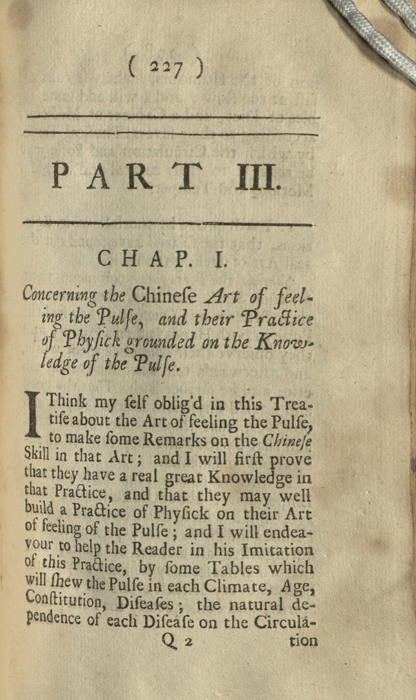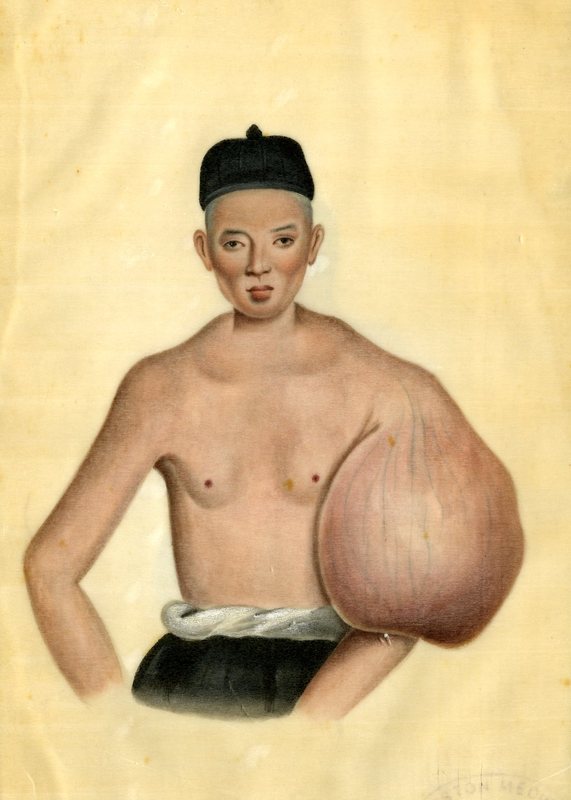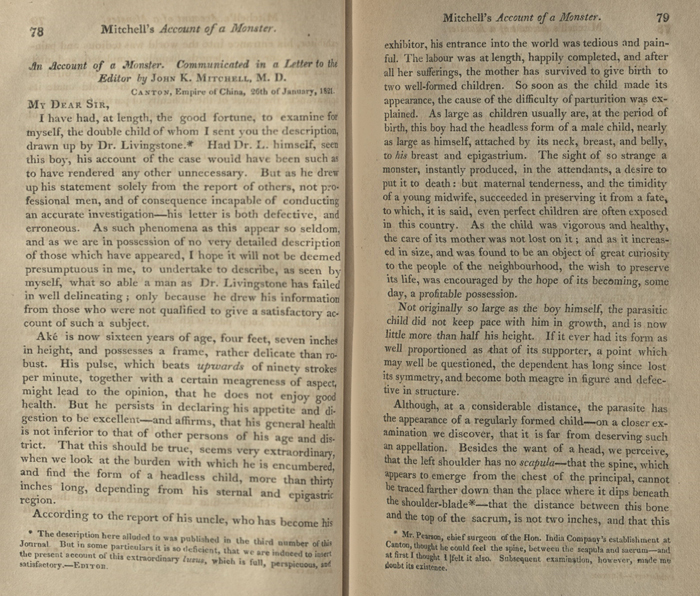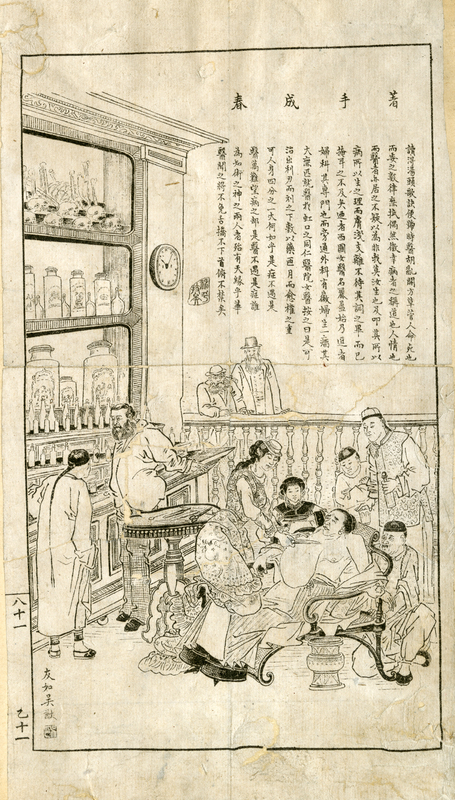Traditional Chinese Medicine
These are some of the earliest translations into Latin of Chinese medical texts on the pulse written by Wang Shuhe of the third century. The translations, though here edited by Andreas Cleyer and published anonymously, were made by Michel Boym (1612-1659), a Polish scientist and Jesuit missionary in China.
English physician Sir John Floyer invented a watch to measure the rate of the pulse and here translates some relevant portions of the Specimen medicinae Sinicae("The Chinese art of Feeling the Pulse is describ'd; and the Imitation of their Practice of Physick, which is grounded on the Observation of the Pulse, is recommended”) into English.
The Ben cao yuan shi ("Origins of the materia medica") describes medicinal plants and herbal substances with their uses and manner of preparation. Like many Chinese medical texts, this early 17th century work was reprinted in Japan during the Edo period.
"Many of the patients treated at the Ophthalmic Hospital in Canton by Peter Parker in the 1830s were immortalized in large color portraits produced by the artist Lam Qua (1801-1860). This album contains rare watercolor studies for a number of the Lam Qua paintings, including views of Po Ashing before and after amputation of his arm.
Peter Parker's journal from November 1836 contains his notes on this case:
""Po Ashing, age 23, entered the hospital Nov. 3, 1836. Six years since, he fell from a horse and broke the humerus of the left arm. Union so far took place as to render the arm serviceable, till six months since, in a crowd at a ""sing song,"" it was broken again. From that time, according to his statement, the arm gradually became larger till it had attained its present enormous size. Beside being painful, the weight of it drew him quite to one side. There was no doubt of its containing fluid. I punctured the arm, supposed that possibly it might contain pus. A dark greenish fluid escaped, with considerable force, but soon became darker and more bloody. The lancet was reentered nearly its whole length; the same discharge continued with a greater proportion of venous blood; 32 ounces in all were discharged. All were agreed that the only chance of life was the removal of the arm."" "
In 1821, Philadelphia physician John Kearsley Mitchell met and examined Aké, a Chinese youth with a partially-formed parasitic twin protruding from his stomach, and sent back this first-hand report from Canton.
An 1881 graduate of the Woman's Medical College of Pennsylvania, Dr. M. Elizabeth Reifsnyder (1858-1922) worked in Shanghai, China, as both physician and missionary and founded the Margaret Williamson Hospital there in 1885. Of this print, the donor stated, "She recently performed a successful ovariotomy there which caused quite a stir. This is a native illustration of the operation. You will observe with admiration the dress & pose of the operator."







